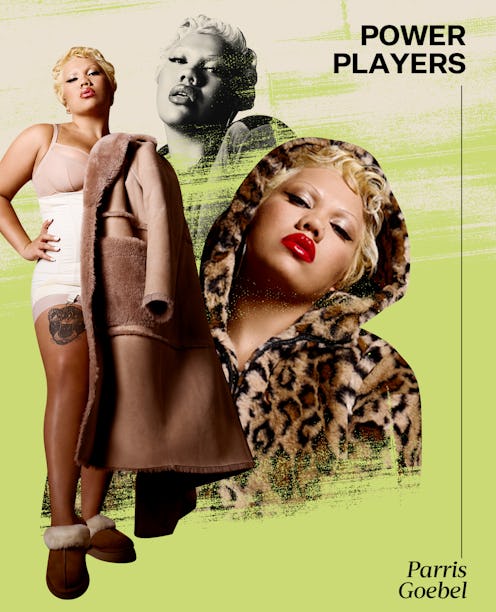Power Players
Parris Goebel Refuses To Be Put In A ‘Dancer’ Box
“There should be other Polynesian girls on billboards, not just me.”

In “Power Players,” change makers in the fashion industry tell Bustle how they’re pushing boundaries and moving the culture forward, whether they’re advocating for sustainability, bringing more inclusivity to the runway, or making strides in technology and innovation. Here, choreographer Parris Goebel discusses representation, brand authenticity, and beauty standards in the industry.
Parris Goebel is “that bitch.” It’s the only label that properly pays respect to her impressive list of accomplishments. At the age of 30-years-old, Goebel is the genius behind Jennifer Lopez’s 2020 Super Bowl halftime performance, Rihanna’s numerous Savage x Fenty shows, and Justin Bieber’s viral “Sorry” music video, to name a few. Though she’s already added some of the most sought-after celeb names to her portfolio, Goebel isn’t content to stay in her lane. Instead, she’s making big moves in the fashion industry.
One of her many goals is to undo the narrow beauty standards that have long plagued the fashion world. Taking up space in an industry that didn’t previously welcome diverse creatives like her, Goebel recently launched a partnership with UGG, standing as brand ambassador and model for the famous footwear brand. Through this new venture, she hopes to normalize Polynesian models, while also helping dancers become viewed as the artists and visionaries they are.
Ahead, Goebel talks to Bustle about her plans to change the world — from the music industry to fashion, and beyond.
Why did you decide to pivot from choreography to modeling?
Everything that I do within dance already has such a fashion aspect to it, so it just felt organic. But for me, what’s really important is representation — in the sense of being from New Zealand, being a Polynesian woman, and taking up space in the fashion world as a Polynesian woman. Putting myself in places where I didn’t see [people like myself] when I was a little girl is so important to me, because I know another Polynesian girls in New Zealand will see me and know she can do it too.
What do you hope to accomplish within the modeling world?
Changing the stereotype of dancers. I feel like we’re not really celebrated in the fashion world, because we’re just seen as dancers that should only be in music videos and awards shows. The thing is about breaking those walls down. Dancers should be seen in the fashion world, fashion shows, and on the runway.
How does it feel seeing yourself on billboards now?
I just feel like that bitch! To not see yourself, growing up, in those places and to be the person to help make that change, it just makes me emotional. I’m just doing my small part in history. I’ve worked really hard, so in other ways it’s like I should be there. I just feel proud — and to me, it’s only the beginning.
How do you select which brands to work with?
Anyone that I partner with, it has to be a true collaboration. It has to be a brand that understands me, what I bring to the table, and what I stand for. I just won’t work with anyone that I don’t feel aligns with my beliefs or who I am as a woman. Working with UGG was awesome, because it was such a true collaboration. They kind of gave me the freedom to do what I wanted — from choosing the choreography, to choosing the music, to casting the dancers. Those are my favorite types of collaborations — where you’re not being put in a box, you’re being told to just be you and express yourself.
At this point, how do you feel about the future of the fashion industry?
There’s still a lot of work to be done. What’s really interesting is, as women, I feel like we’re programmed [with] a lot of restrictions. We’ve been told for so long what’s beautiful and how we should look. It’s quite sad to think [of] how I viewed myself years ago, compared to how I view myself now — it’s so drastic. Our generation now is undoing all of that and it takes a lot of work. It’s a frustrating process and I think it’s at least taking a step in the right direction. Brands are starting to listen and starting to put diversity at the forefront.
We only include products that have been independently selected by Bustle's editorial team. However, we may receive a portion of sales if you purchase a product through a link in this article.